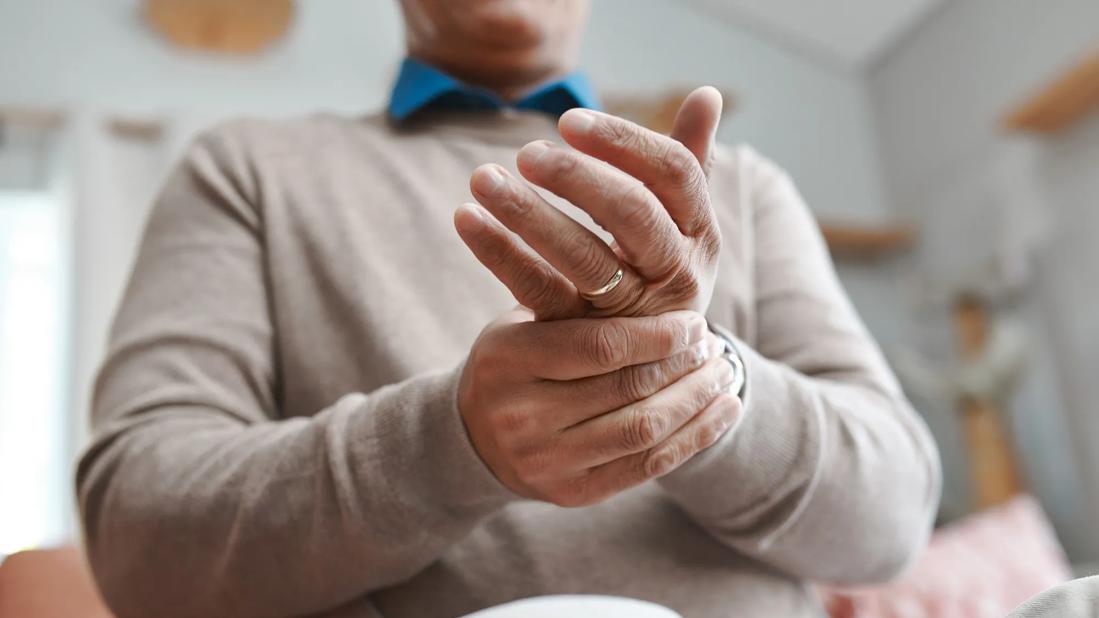The causes of fibromyalgia are complex, but an overactive immune system might be part of it

If you’re living with fibromyalgia, or think you might be, it’s only natural to want answers. Like, what causes it? And, is fibromyalgia an autoimmune disease?
Advertisement
Cleveland Clinic is a non-profit academic medical center. Advertising on our site helps support our mission. We do not endorse non-Cleveland Clinic products or services. Policy
They’re valid questions — but tough to answer. There’s still a lot we don’t know about fibromyalgia.
We talked with pain medicine specialist Benjamin Abraham, MD, about what we know and what we don’t know about your immune system and fibromyalgia.
Fibromyalgia isn’t classified as an autoimmune disease. But an overactive immune system may be part of what causes fibromyalgia.
“There does appear to be some pretty solid evidence that there’s an autoimmune component to fibromyalgia — but it’s not a perfect correlation,” Dr. Abraham reports. “Fibromyalgia is a complicated disease, and there probably isn’t a single cause.”
Here’s what that means.
Your immune system protects your body from invaders like viruses and bacteria. Autoimmune diseases happen when your immune system attacks your healthy cells instead of targeting things that can make you sick. Basically, your immune system turns on you.
Autoimmune conditions include conditions like:
These share common features that lead to them being categorized as autoimmune diseases. Fibromyalgia shares some of them, but not all.
It’s like that old saying, “If it looks like a duck, swims like a duck and quacks like a duck — it’s a duck.” Autoimmune diseases are the duck. Fibromyalgia may look like them, but it doesn’t necessarily swim or quack like them.
Advertisement
There’s some evidence suggesting that fibromyalgia is associated with inflammation caused by your immune system. In that sense, fibromyalgia may resemble autoimmune disease.
For example, researchers in one study tested the blood of people with fibromyalgia and found they have higher levels of certain proteins called cytokines in their blood. Specifically, they found more cytokines that regulate the immune system and stimulate inflammation.
“This suggests that these molecules, which are known for promoting inflammation, are related to the neuro-inflammation found in the brains and spinal cords of people with fibromyalgia,” Dr. Abraham explains.
Another study suggests fibromyalgia may stem from overactive immune cells in the central nervous system. When those cells are triggered, they can heighten pain sensitivity, at least in lab tests.
Put simply, the results suggest that fibromyalgia symptoms may stem in part from an oversized immune response. But more evidence is needed.
Given those findings and others, it’s clear that fibromyalgia can share features of an autoimmune disease. But the connection isn’t that simple. It still doesn’t quite fit.
Here are a few ways fibromyalgia is different from an autoimmune disease:
One thing we know for sure? Fibromyalgia is real. So, too, are your pain, brain fog and other symptoms. While we can’t say with certainty what causes fibromyalgia at this time, know that your experience is valid.
Fibromyalgia may share some common features of an autoimmune disease, and research is ongoing to better understand it.
Advertisement
Advertisement
Learn more about our editorial process.
Advertisement

Pain is the distinguishing factor for determining if you have fibromyalgia

Setting the record straight: Diagnosis, treatment + more

Low-level, dull soreness that goes away with rest or physical activity is normal — but if it lingers or worsens, see a healthcare provider

When your lower back hurts, stretching and staying active can be key to finding relief

Drinking alcohol can cause nerve pain, dehydration and weight gain, which can all lead to back pain

Your sleep position, immobility, mattress and underlying conditions can all cause morning back pain

Tendinopathy tends to get better with rest, ice, pain management and physical therapy

If you’re feeling short of breath, sleep can be tough — propping yourself up or sleeping on your side may help

If you fear the unknown or find yourself needing reassurance often, you may identify with this attachment style

If you’re looking to boost your gut health, it’s better to get fiber from whole foods